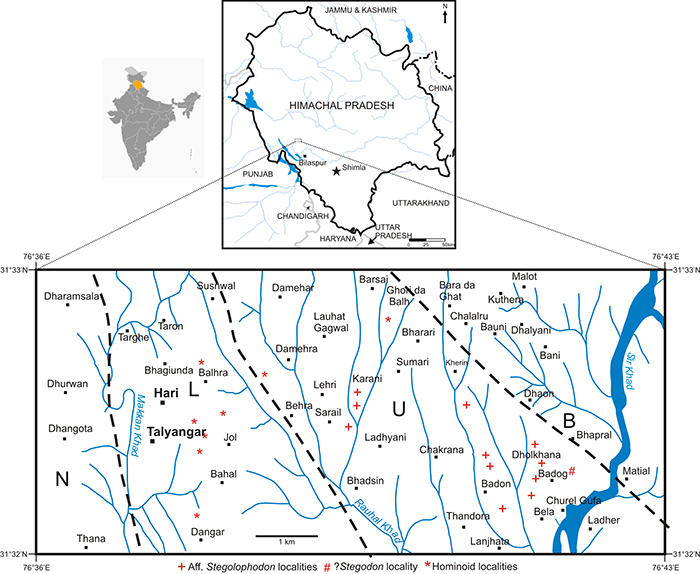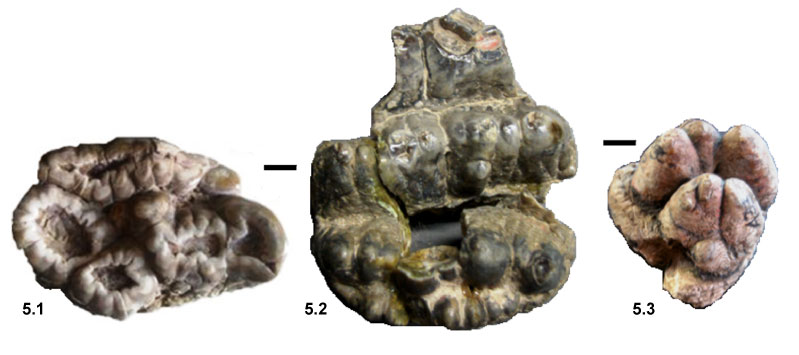FIGURE 1. Map of the Haritalyangar area showing the fossiliferous localities of the hominoids and proboscideans. N: Nahan Formation (=equivalent to the Chinji Formation of the Siwaliks of Pakistan). L: ’Lower Alternations’ (=roughly equivalent to the Nagri Formation of the Siwaliks of Pakistan). U: ‘Upper Alternations’ (=Dhok Pathan Formation of the Siwaliks of Pakistan), B: Boulder Conglomerate. Dashed lines: limits between the formations (modified after Johnson et al., 1983).

FIGURE 2. HTA 175, right M3 of Stegolophodon cf. stegodontoides. 2.1: occlusal view. 2.2: buccal view. Scale bar equals 5 cm.

FIGURE 3. HTA-115, right M 3 of aff. Stegolophodon sp. 3.1: occlusal view. 3.2: interpreted occlusal view. 3.3: buccal view. Scale bar equals 1cm. Dental nomenclature and abbreviations follows Tassy (1995): Meso= mesoconelet. Pr= pretrite main cone. Po = posttrite main cone. Ccprp = posterior pretrite central conule. Ccpra: anterior preprite central conule.

FIGURE 4. Aff. Stegolophodon premolars in occlusal (upper row) and buccal (bottom row) views: 4.1. HTA-99 left P/4; 4.2 HTA-115a left dP/3; 4.3 HTA-41, left P/4; 4.4 HTA-32, left P/4. Scale bars: 1 cm.

FIGURE 5. 5.1 HTA-46, right M2/ of Choerolophodon corrugatus. 5.2 HTA-92, right M1/ or M2/ of ?Stegodon sp.; 5.3 HTA-33, left M3 distal fragment of an indeterminate gomphothere or amebelodont. Scale bars 2cm.


